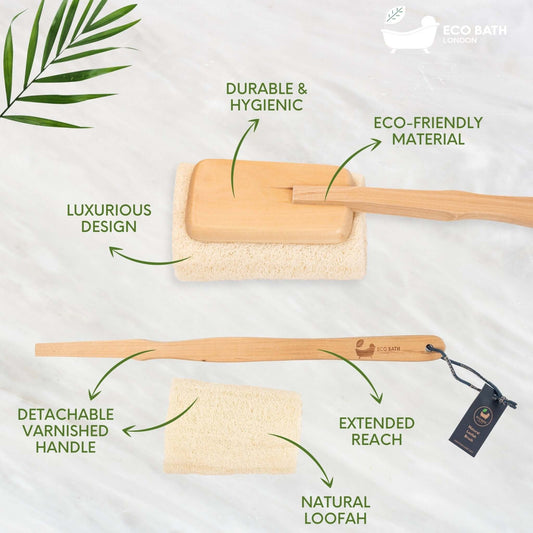
Navigating Sustainability Trade-Offs: Balancing Eco-Friendly Choices
Share
In our collective pursuit of a greener future, it's crucial to recognise that improving one aspect of sustainability often means compromising another. These sustainability trade-offs are common across industries and influence the decisions we make as eco-conscious consumers. Let’s explore what these trade-offs entail, review real-world examples, and discuss how to make balanced, informed choices that align with our environmental, social, and economic goals.
UNDERSTANDING SUSTAINABILITY TRADE-OFFS
Sustainability trade-offs happen when advancing one aspect—whether environmental, social, or economic—comes at the expense of another. These compromises are not just theoretical; they appear in everyday products and services, impacting our daily decisions. Understanding these trade-offs is key to making informed choices that align with our values and long-term sustainability goals.
THE THREE PILLARS OF SUSTAINABILITY
To fully grasp these trade-offs, it’s important to consider the three pillars of sustainability:
-
Environmental Sustainability: Focuses on preserving natural resources, reducing pollution, and maintaining ecological balance.
-
Social Sustainability: Emphasises social equity, community well-being, and fair labour practices.
-
Economic Sustainability: Aims for economic growth, profitability, and financial stability.
Balancing these pillars often means navigating complex trade-offs where progress in one area might hinder another. Recognising these interdependencies helps consumers and businesses make more balanced, responsible decisions.
THE COMPLEXITY OF TRADE-OFFS
Trade-offs are inherent in decision-making because resources like land, money, and time are finite. Allocating resources to one goal can limit availability for others, requiring a nuanced and strategic approach to sustainability.
ENVIRONMENTAL VS. ECONOMIC SUSTAINABILITY
One of the most common trade-offs is between environmental protection and economic growth. Striking the right balance can impact both the planet and livelihoods.
Renewable Energy
-
Wind Farms: Wind energy reduces carbon emissions but can disrupt local ecosystems, affecting birds, bats, and plants. The trade-off is between reducing carbon footprints and preserving biodiversity.
-
Solar Power: Solar farms reduce reliance on fossil fuels but require large areas of land, potentially conflicting with agriculture or natural habitats. Additionally, manufacturing solar panels involves resource extraction and energy consumption.
Organic Farming
-
Benefits: Organic farming supports soil health and biodiversity, using fewer synthetic pesticides and fertilisers.
-
Challenges: Organic methods often yield fewer crops, which may require more land, potentially encroaching on natural ecosystems. The trade-off lies in supporting eco-friendly agriculture while ensuring enough food for a growing population.
Sustainable Forestry
-
Environmental Protection: Practices like selective logging and reforestation help maintain biodiversity and sequester carbon.
-
Economic Impact: These practices may result in higher costs and lower yields compared to conventional logging, potentially raising prices for consumers. The trade-off involves promoting long-term forest health while managing short-term economic viability.
SOCIAL VS. ENVIRONMENTAL SUSTAINABILITY
Balancing social needs with environmental preservation adds another layer of complexity to sustainability.
Ecotourism
-
Economic and Social Benefits: It can boost local economies and foster cultural exchange, turning natural areas into valuable assets.
-
Environmental Concerns: However, increased tourism can degrade environments if not managed well, leading to overcrowding and habitat destruction. The trade-off is between economic gains for communities and preserving the ecosystems that attract tourists.
Urban Development
-
Social Equity: Affordable housing is critical for social equity, particularly in cities facing housing shortages.
-
Environmental Preservation: Urban development often reduces green spaces, which are vital for air quality and recreational needs. The trade-off is between providing affordable housing and maintaining the environmental quality of urban areas.
SHORT-TERM VS. LONG-TERM SUSTAINABILITY
Balancing immediate benefits with future sustainability is another critical area of trade-offs. Decisions made today can have lasting impacts.
Fishing Quotas
-
Long-term Benefits: Implementing quotas protects fish populations and marine ecosystems, ensuring long-term biodiversity.
-
Short-term Challenges: These quotas can impact fishing communities by reducing their immediate income, affecting livelihoods in the short term.
Infrastructure Investment
-
Long-term Gains: Investing in sustainable infrastructure like public transportation and renewable energy systems offers long-term economic and environmental benefits.
-
Short-term Costs: The initial investment is often high, potentially increasing taxes or public debt. The trade-off is between short-term financial burden and long-term sustainable growth.
REAL-WORLD EXAMPLES IN THE CIRCULAR ECONOMY
The circular economy aims to minimise waste and optimise resource use, presenting both opportunities and challenges for achieving sustainability.
Industrial Symbiosis in Denmark
-
Environmental vs. Economic: This approach improves resource efficiency but requires significant upfront investment, impacting short-term profitability.
-
Short-term vs. Long-term: The initial financial burden can be offset by reduced waste disposal costs and new revenue streams in the long run.
Fashion Industry Initiatives
-
Patagonia's Worn Wear Programme: Encourages customers to repair and resell used clothing, promoting sustainability but potentially reducing new product sales.
-
H&M’s Garment Collection: Supports recycling but involves higher operational costs. The trade-off is between eco-friendly practices and maintaining profitability.
MANAGING SUSTAINABILITY TRADE-OFFS EFFECTIVELY
Addressing sustainability trade-offs requires a strategic approach. Here’s how to navigate these complexities:
-
Holistic Thinking: Consider all dimensions of sustainability to ensure progress in one area doesn’t undermine another.
-
Stakeholder Engagement: Involve diverse perspectives to develop balanced solutions.
-
Innovation and Technology: Invest in research and development to minimise trade-offs.
-
Adaptive Management: Use flexible strategies that adjust to changing conditions.
-
Policy Frameworks: Implement policies that integrate environmental, social, and economic goals.
-
Education and Awareness: Educate consumers and businesses on the importance of balanced decision-making.
-
Collaboration and Partnerships: Foster alliances to leverage collective expertise in addressing trade-offs.
YOUR ROLE AS AN ECO-CONSCIOUS CONSUMER
Understanding sustainability trade-offs empowers you to make informed choices that align with your values. Here’s how you can make a difference:
-
Support Sustainable Brands: Buy from companies that balance economic and environmental priorities.
-
Reduce Consumption: Buy only what you need and choose durable products.
-
Recycle and Reuse: Participate in recycling programmes to extend product lifecycles.
-
Advocate for Change: Engage in discussions, support policy initiatives, and join community efforts.
TAKE ACTION TODAY
Navigating sustainability trade-offs requires collective effort and informed decisions. By understanding these complexities, we can work towards a more balanced, sustainable future.
Join the Movement Stay informed with the latest developments in sustainability by subscribing to the alewk.clubnewsletter. Our insights will empower you to make eco-friendly choices and drive positive change in your community. Together, we can balance the challenges of sustainability and build a healthier planet for future generations.








